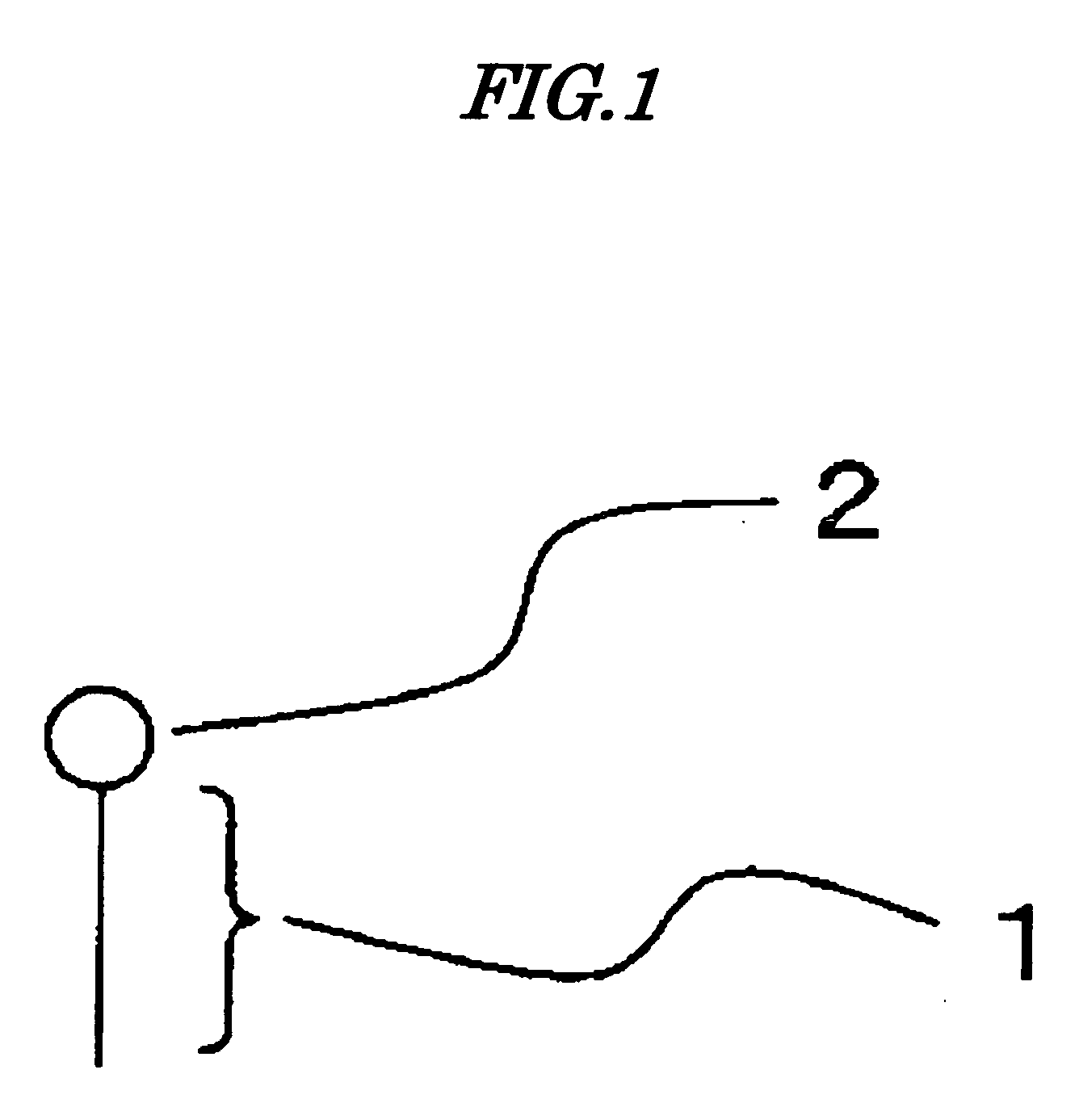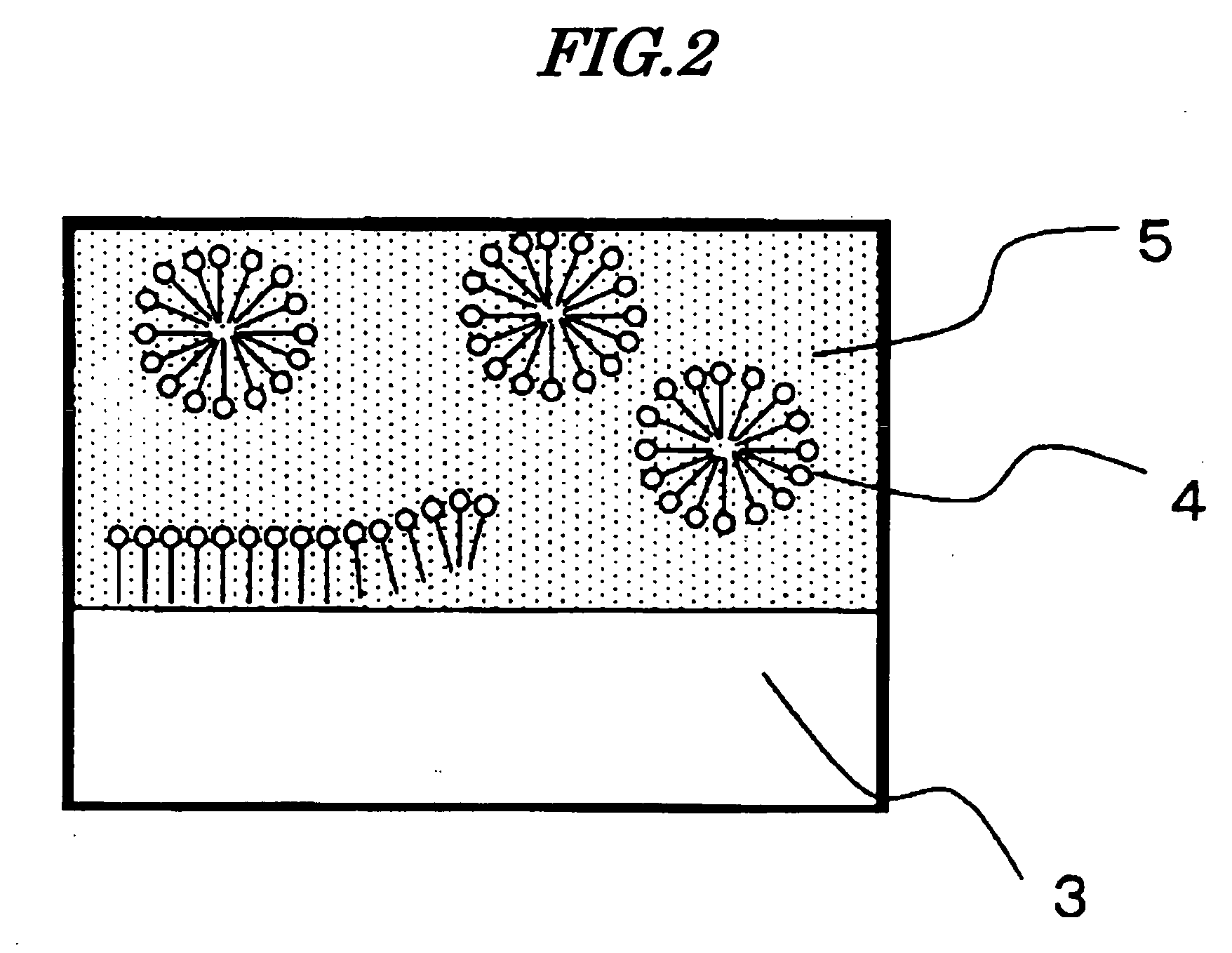Method for Producing Functional Membrane
a functional membrane and membrane technology, applied in the direction of membranes, sustainable manufacturing/processing, cell components, etc., can solve the problems of fuel concentration cannot be increased, energy loss, and electrolyte membranes are absorbed, so as to improve performance stability and improve productivity
- Summary
- Abstract
- Description
- Claims
- Application Information
AI Technical Summary
Benefits of technology
Problems solved by technology
Method used
Image
Examples
example 1
[0102]A section of a roll of a polyethylene membrane (thickness 30 μm, porosity 35%, average pore size about 0.06 μm) with a length of 50 m was prepared as a porous substrate. A vessel (surfactant vessel) was charged with a suspension having a composition of 0.5 weight % of a surfactant (acetylene glycol-based surfactant: product name Dynol 604, manufactured by Nisshin Chemical Industry Co., Ltd.), 79.5 weight % of water, and 20 weight % of isopropyl alcohol, the porous substrate was continuously immersed therein while unwinding it from the roll, and passed through a hot air drying oven at about 80° C. Subsequently, it was continuously immersed in an electrolyte polymer precursor solution having a composition comprising 35 g of 2-acrylamido-2-methylpropanesulfonic acid, 15 g of N,N′-ethylenebisacrylamide, 0.005 g of a UV radical polymerization initiator, and 50 g of water so as to impregnate it with the monomer aqueous solution, and impregnation of the porous substrate with the mono...
example 2
[0103]An electrolyte membrane was obtained in the same way as in Example 1 except that a solution of a surfactant having a composition comprising 0.4 weight % of Dynol 604 and 99.6 weight % of water was used. In this case also, the surfactant vessel was in a suspended state, and impregnation with the monomer aqueous solution was within 1 sec. This membrane was evaluated in the same manner as in Example 1, and the results are brought together in Table 1.
example 3
[0104]An electrolyte membrane was obtained in the same way as in Example 1 except that a solution of an electrolyte polymer precursor having a composition comprising 45 g of 2-acrylamido-2-methylpropanesulfonic acid, 5 g of N,N′-ethylenebisacrylamide, 0.005 g of a UV radical polymerization initiator, and 50 g of water was used. This membrane was evaluated in the same manner as in Example 1, and the results are brought together in Table 1.
PUM
| Property | Measurement | Unit |
|---|---|---|
| Percent by mass | aaaaa | aaaaa |
| Percent by mass | aaaaa | aaaaa |
| Volume | aaaaa | aaaaa |
Abstract
Description
Claims
Application Information
 Login to View More
Login to View More - R&D
- Intellectual Property
- Life Sciences
- Materials
- Tech Scout
- Unparalleled Data Quality
- Higher Quality Content
- 60% Fewer Hallucinations
Browse by: Latest US Patents, China's latest patents, Technical Efficacy Thesaurus, Application Domain, Technology Topic, Popular Technical Reports.
© 2025 PatSnap. All rights reserved.Legal|Privacy policy|Modern Slavery Act Transparency Statement|Sitemap|About US| Contact US: help@patsnap.com



